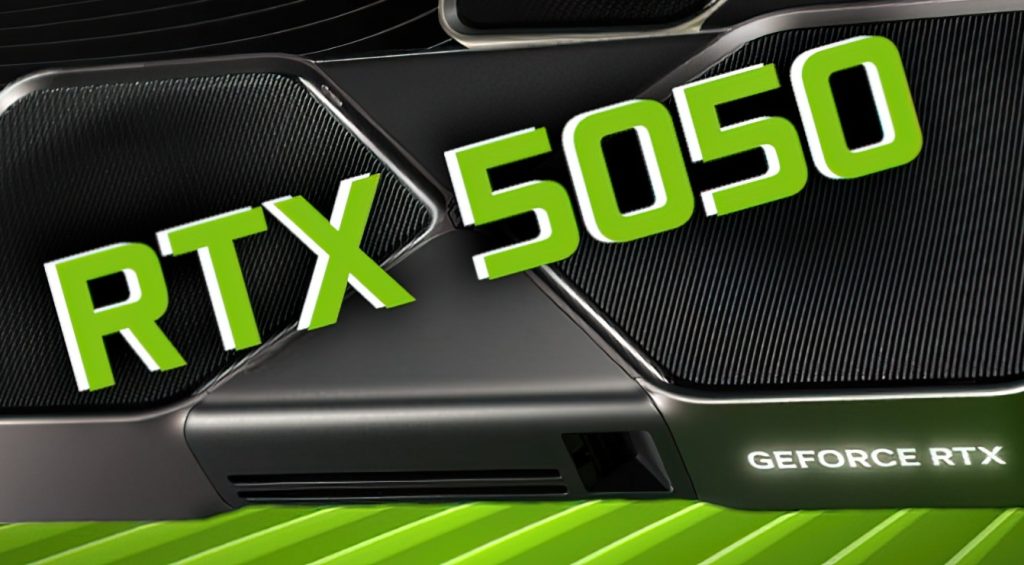NVIDIA, a leading name in the graphics card industry, has made headlines by rescheduling the launch of its much-anticipated GeForce RTX 5050 GPU to July 1st, a change from its previous scheduled date at the end of July. This announcement has raised eyebrows and sparked discussions among tech enthusiasts and industry analysts alike.
NVIDIA’s Strategy Behind the New Launch Date
The decision to advance the launch date to July 1st seems perplexing, as noted by industry insiders such as MEGAsizeGPU. The rescheduled launch might end up being a “paper launch,” meaning that while NVIDIA will make an announcement and showcase the GPU, actual sales may not begin until later in the month due to logistical challenges in shipping. This unusual strategy could affect consumer confidence and market dynamics as potential buyers await availability.
NVIDIA suddenly informed all AIC that the desktop RTX 5050’s launch date has been rescheduled to July 1st. The former launch date was the end of July. IDK why Nvidia made this award decision since no card can be shipped on July 1st.
— MEGAsizeGPU (@Zed__Wang) June 24, 2025
Specifications and Market Positioning
The NVIDIA GeForce RTX 5050 is designed to cater to the entry-level segment of the GPU market, with a competitive price range between $199 and $249. This positions it strategically beneath the GeForce RTX 5060, which is priced at $299. The RTX 5050 will face competition primarily from Intel’s Arc B580 and B570 GPUs, priced at $219 and $249, respectively, making this segment highly competitive.
In terms of specifications, the GeForce RTX 5050 will utilize the new Blackwell architecture, featuring:
- 2560 CUDA cores, identical to that of the RTX 3050 but built on the more advanced architecture.
- 8 GB of GDDR6 memory running across a 128-bit bus.
- Support for 20 Gbps memory speeds, providing 320 GB/s bandwidth, a significant improvement over the RTX 3050’s 14 Gbps speed and 224 GB/s bandwidth.
- A thermal design power (TDP) of around 100W, expected to be more efficient than the RTX 3050’s 130W.
For a comprehensive comparison of specifications between the RTX 5050 and its predecessor, RTX 3050, the card will showcase a notable performance boost:
- Blackwell Architecture vs. Ampere Architecture
- 20 Gbps vs. 14 Gbps GDDR6 Memory (+43%)
- 320 GB/s vs. 224 GB/s Bandwidth (+43%)
NVIDIA is expected to release various custom models through its AIB (Add-In Board) partners, as a Founders Edition may not be available at launch. This indicates that users will have a range of choices, catering to different aesthetics and cooling requirements.
Market Reaction and Anticipation
The RTX 5050’s entry into the market is seen as crucial, especially given the growing demand for affordable yet capable graphics solutions. According to a recent Statista report, the global graphics card market is projected to reach $41 billion by 2027. As gaming continues to grow in popularity, NVIDIA’s attempts to capture a larger share of the entry-level segment will be closely monitored by analysts and consumers alike.
The upcoming launch also poses a significant test for NVIDIA’s strategy in a market increasingly dominated by competitors such as AMD and Intel. With the latter’s graphics solutions gaining traction, particularly with solid performance metrics at competitive pricing, NVIDIA’s RTX 5050 will need to deliver both in capability and availability to secure its foothold.
Quick Reference Table
| Feature | NVIDIA GeForce RTX 5050 | NVIDIA GeForce RTX 3050 |
|---|---|---|
| CUDA Cores | 2560 | 2560 |
| Memory | 8 GB GDDR6 | 8 GB GDDR6 |
| Memory Speed | 20 Gbps | 14 Gbps |
| Bandwidth | 320 GB/s | 224 GB/s |
| TDP | 100W | 130W |
| Price | $199-$249 | $249 |
As the July 1st date approaches, industry watchers and gamers alike will be eager to see how NVIDIA navigates this launch and the subsequent availability of the RTX 5050. With its specifications and price point, it has the potential to reshape expectations in the entry-level GPU market.

